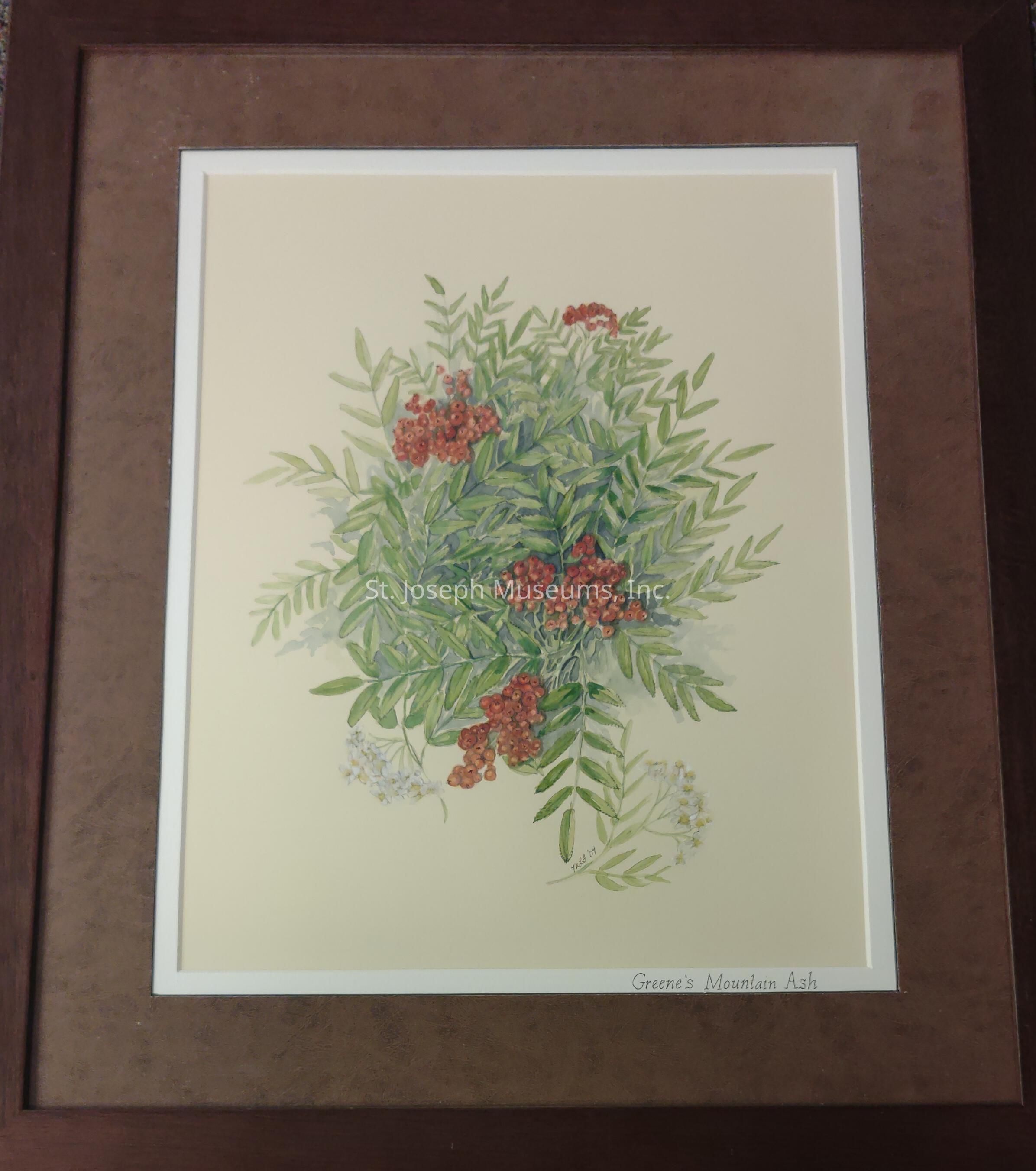Name/Title
Greene's Mountain Ash (Sorbus scopulina) WatercolorEntry/Object ID
2021.1.40 AScope and Content
Greene's Mountain Ash (Sorbus scopulina) Watercolor, framed.
Greene's Mountain Ash, also known as Cascade Mountain Ash, was named for Edward Greene, the first botanist to describe the tree. It is a slow-growing shrub or tree. In June and July, clusters of tiny flowers appear that turn into red berries in late summer. In Latin, scopulina means of the rock or cliff. This matches the terrain of the tree's native range of Alaska south to northern California and east to the Dakotas and New Mexico.Context
Originally designed by the St. Joseph Museum in the fall of 2004. Titled "Botanical Wonders of the Uncharted West. The Recorded Flora of the Lewis & Clark Expedition."Collection
Lewis and ClarkLexicon
LOC Thesaurus for Graphic Materials
Botanical drawings, Expeditions & surveysArchive Items Details
Title
Greene's Mountain Ash (Sorbus scopulina) WatercolorCreator
Mary L. FletcherDate(s) of Creation
2004Subjects
Plants, Watercolor paintingsParts
Count
2Parts
Watercolor of plant and descriptive label, both framed.Condition
Overall Condition
Very GoodProvenance
Notes
"Botanical Wonders of the Uncharted West" visually depicts how well Lewis followed Jefferson's instructions. In recognition of this achievement, The S. Joseph Museums, Inc. commissioned accomplished artist Mary Fletcher to create fifty (50) selected paintings of flora documented by the Corps during their Journey. These framed watercolor originals are accompanied by similarly framed labels, generated by former Head of Research Jackie Lewin, which describe the corresponding plants with appropriate quotations from the Journals. This collection makes available for study and appreciation plants that were new to Lewis and Clark, but which Native Peoples already recognized as valuable sources of food, medicine, and tools. Some of these still remain a mystery to many, but all will enjoy their beauty, their diverse uses, and their accomplished renderings.
